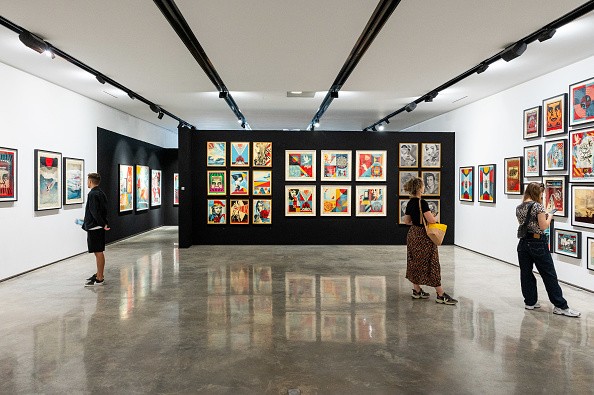
Audrey Flack, a pioneer of photorealism known for oversized, in-your-face still lifes packed with color and detail, died on Friday, June 28, in Southhampton, New York. She was 93.
Her death was confirmed by her former dealer, Louis K. Meisel Gallery, and her current representing gallery, Hollis Taggart. Her daughter Hannah Marcus said an aortic tear caused her death.
The still lifes Flack painted from photographs, sometimes using an airbrush, are her most well-known works. On a canvas measuring six and a half feet square, 'Queen' features a dewy rose, an orange slice, a playing card, and a photo locket with images of Flack and her mother nestled among other nostalgic and symbolic items.
'Macarena of Miracles,' a precise, close-up study of a wooden madonna sculpture in the Seville cathedral credited to the 17th-century sculptor Luisa Roldán, was displayed at the Whitney Biennial in 1972. Special attention was paid to her ornately gilded garments and crystal tears. In 'World War II (Vanitas),' Flack shows a picture of prisoners in a concentration camp with a red candle, a strand of pearls, and a little silver tray filled with enormous petits fours.
In a 2024 ARTnews feature of Flack, Karen Chernick said, "At 92, Flack is having a moment." She continued, "This wasn't a given, considering she's always gone against the grain. She was figurative when abstraction and minimalism were ascendant; she used airbrushes when fine artists wouldn't touch them; her still lifes of lipstick, roses, and beaded necklaces didn't match the cars and trucks that her fellow Photorealists were painting. And when she decided to be a sculptor, all of a sudden, her sculptures were polychrome."
Flack's 'Vanitas' paintings produced between 1976 and 1978 are one of her most renowned series. These massively scaled pieces often refer to the centuries-old tradition of vanitas still lifes, which place skulls next to various things that frequently signify the passing of time to remind spectators of their death.
Some found these paintings to be aesthetically offensive. In a New York Times article, Flack's paintings were called "irredeemably hideous" by critic John Russell. However, the artist ignored the criticism and still made dozens of Photorealist works.